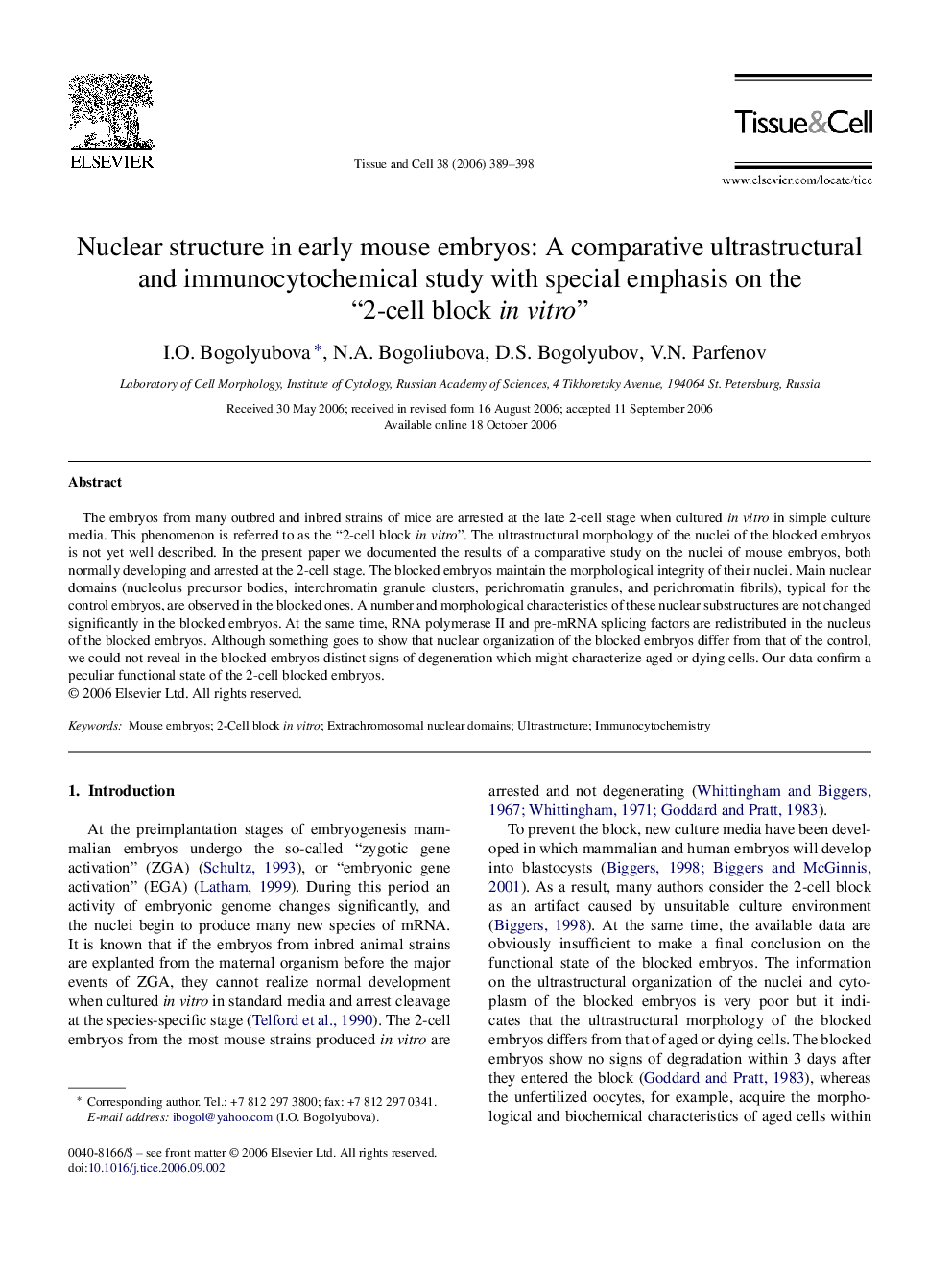| Article ID | Journal | Published Year | Pages | File Type |
|---|---|---|---|---|
| 2204113 | Tissue and Cell | 2006 | 10 Pages |
Abstract
The embryos from many outbred and inbred strains of mice are arrested at the late 2-cell stage when cultured in vitro in simple culture media. This phenomenon is referred to as the “2-cell block in vitro”. The ultrastructural morphology of the nuclei of the blocked embryos is not yet well described. In the present paper we documented the results of a comparative study on the nuclei of mouse embryos, both normally developing and arrested at the 2-cell stage. The blocked embryos maintain the morphological integrity of their nuclei. Main nuclear domains (nucleolus precursor bodies, interchromatin granule clusters, perichromatin granules, and perichromatin fibrils), typical for the control embryos, are observed in the blocked ones. A number and morphological characteristics of these nuclear substructures are not changed significantly in the blocked embryos. At the same time, RNA polymerase II and pre-mRNA splicing factors are redistributed in the nucleus of the blocked embryos. Although something goes to show that nuclear organization of the blocked embryos differ from that of the control, we could not reveal in the blocked embryos distinct signs of degeneration which might characterize aged or dying cells. Our data confirm a peculiar functional state of the 2-cell blocked embryos.
Related Topics
Life Sciences
Agricultural and Biological Sciences
Agricultural and Biological Sciences (General)
Authors
I.O. Bogolyubova, N.A. Bogoliubova, D.S. Bogolyubov, V.N. Parfenov,
